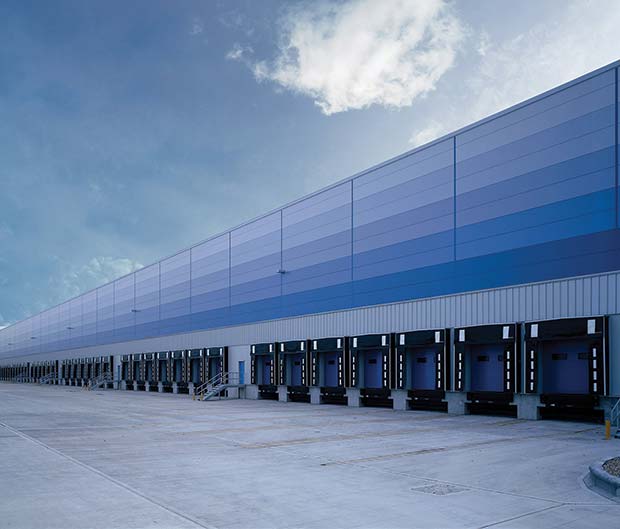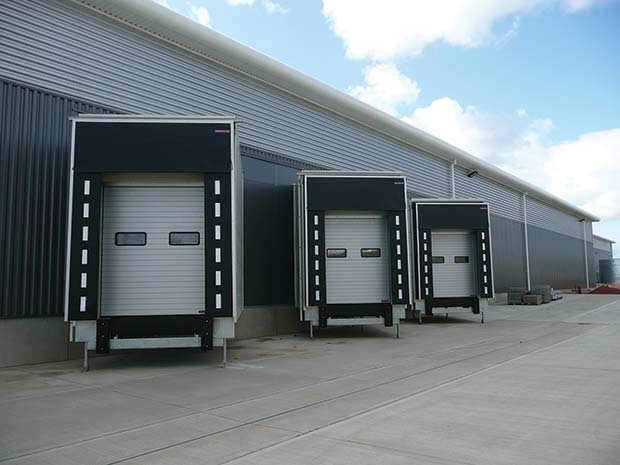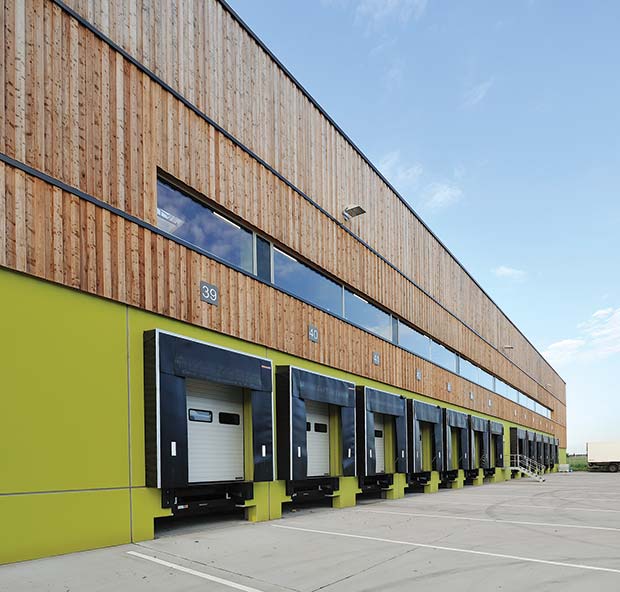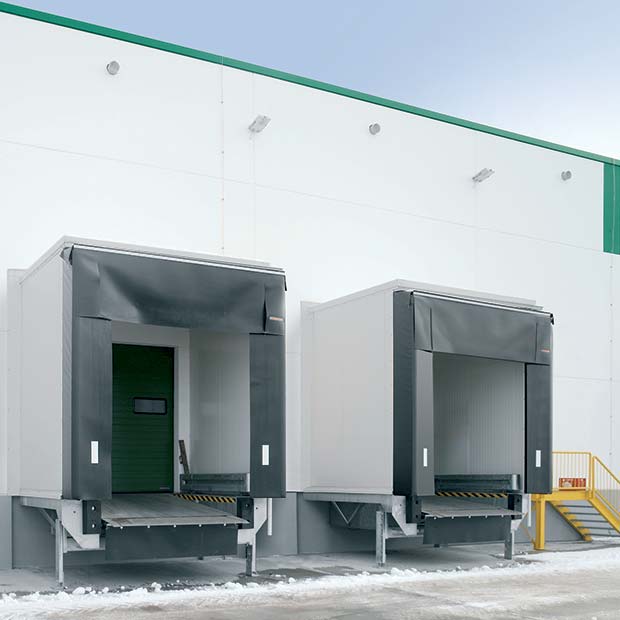The design of loading bays has continued to evolve with the demand for greater flexibility on the rise. As well as helping to minimise risks in the loading bay area, through the ability to work safely with a wider range of vehicle sizes and types, this also adds to the longevity and therefore the sustainability of a particular development.

Sustainability plays a significant part in the thinking of many developers and has become an important issue for the logistics industry as major companies have made commitments to reduce their own environmental impact. Supply chains have been identified by many businesses as an area where improvements can be made. With sustainable practices that reduce waste, improve efficiency and bring down whole life costs all adding to the bottom line, these actions are gaining importance in many boardrooms.
In order to help architects and designers meet these environmental targets, Hörmann has produced independently verified Environmental Product Descriptions as a part of its holistic approach to developing new products and designs. By tightly controlling sourcing and production, this key data can be produced which in turn helps when new developments are being considered and planned.
The whole solution approach extends to the loading bay itself, with a number of products developed to enhance the functionality and safety aspects of loading bays. This year the HFB forklift barrier, integrated into new dock levellers, and an LED driver’s light guide have been introduced. Another example of continual improvement is that LED dock lighting has become the standard since this provides a better spread of light for operators and saves energy.
The drive for flexibility, longevity and efficiency is also creating a demand for maintenance and repair contracts to ensure equipment is optimised and downtime reduced. Hörmann has addressed this by investing in the equipment and staff to deliver both a first class service and accurate, on demand reporting to comply with legislative requirements and both insurance and risk assessment audits.

Greater integration is one of the elements that allows increased flexibility in a loading bay. The use of longer dock levellers with telescopic lips enables a greater range of vehicle heights to be accommodated, however the dock shelter, and doors need to be capable of working with the same configurations. Bays that can handle standard, aerodynamic and even double-deck trailers will need bigger doors and dock shelters, and inflatable curtains to create an efficient dock seal. With safety such an important aspect of loading bay design the vehicle control lights, guides and securing mechanisms are often linked to the loading bay equipment to create a standardised procedure that has to be employed in the correct sequence.
Asda’s distribution centre at Rochdale has been developed to meet these requirements. Dock shelters were specifically extended to be 1700mm deep so that the inflatable head creates a seal on the rear of their Cheetah trailers at the front of the aerodynamic slope. This simple design prevents rainwater from running into the building and minimises the risk of slipping.
To counteract a similar hazard, Waitrose specified an anti-slip coating for all the dock levellers at its new distribution centre in Leyland.
However, another reason for this choice is that this surface coating also reduces noise as roll cages are loaded and unloaded. This consideration for the working environment is another factor in the development of loading bays. To this end Waitrose also included panoramic vision panels into each loading bay door to maximise natural lighting from this safety feature.

For developers, sustainability and flexibility extends to ensuring a building can appeal to a wide range of potential tenants, so alongside plans to meet specific requirements, the ability to readily adapt or alter loading bays has to be considered. The latest thinking has involved installing knock-through panels to insert additional bays at a future stage, to installing dummy loading bays with manual insulated doors and covered dock leveller spaces so that additional bays can be added without the need for any building work.
Another option is to use external loading houses to meet specific needs since these can simply be unbolted and replaced with an alternative version. Taking this a step further Hörmann has developed a design for Prologis, using a pedestal dock house internally, in order to create the space to replace this bay with a scissor lift if required by a future tenant.
Liaising with developers, operators and even vehicle manufacturers is all part of the process that is helping to shape loading bays that not only meet existing needs but also future requirements.

This commitment to developing better, safer loading bays was recognised earlier this year when Hörmann won the TCS&D, Health and Safety Award, for a number of initiatives and the forward thinking approach taken to new developments. Working on site is a key factor, that helps to ensure that both new developments and refurbishment projects can all benefit from the latest products and ideas. This hands-on approach ensures that site specific needs are met, while maximising both safety and efficiency.
Hörmann UK
Tel: 01530 516888




Comments are closed.